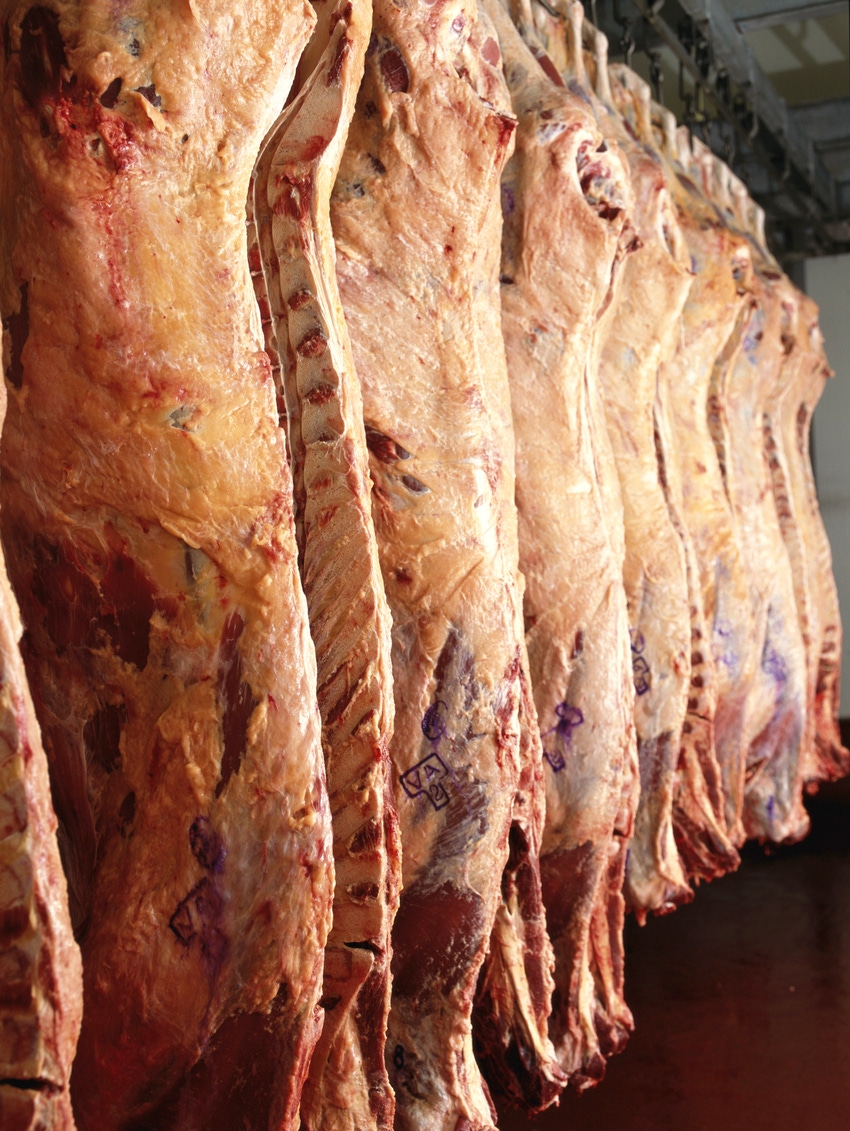Cash prices decline as competition for hook space increases.
May 4, 2020

Feared since the start, COVID-19 infections at meatpacking and processing plants appeared to slow production by the middle of April.
“The U.S. meat industry faces unprecedented threats as COVID-19 sweeps through labor forces at meat processing facilities nationwide,” said Derrell Peel, Extension livestock marketing specialist at Oklahoma State University, in his April 13 market comments.
“Feedlots could be faced with slowing fed cattle finishing or holding animals on maintenance rations until slaughter can be scheduled,” Peel explained.
“Cull cows and bulls may have to be held in drylots or pastures until slaughter capacity becomes available.”
A slowdown in feedlot marketings could result in slower feedlot placements and more feeder cattle staying on pasture, Peel said.
“The beef industry ultimately has considerable flexibility to adjust cattle flows and timing.
“These responses would increase cost of production at all levels but probably would not be as severe as might result from similar disruption in pork and poultry industries, where bottlenecks and backlogs are much more acute.”
Earlier in the month, agricultural economists Glynn Tonsor at Kansas State University and Lee Schulz at Iowa State University offered their insight on the potential impact on fed cattle prices.
In their paper “Assessing Impact of Packing Plant Utilization on Livestock Prices,” Tonsor and Schulz explain that cash fed cattle prices decline as beef packing capacity use increases relative to the same or increasing numbers.
Said another way, cash prices decline as competition for hook space increases.
“It should be noted that packer capacity is not an average annual concept, it’s how close the industry is to capacity at peak harvest times. Peak fed cattle slaughter typically occurs in the summer,” Tonsor and Schulz say.
With their specific modeling, Tonsor and Schulz found that 1% more national beef packing plant use corresponded to a 1.32% reduction in cash fed cattle prices.
Their report details the model development they used to estimate capacity use and price impacts.
“Accordingly, for demonstration purposes, if the industry operates at 20% lower capacity rates [increased capacity utilization], then we may anticipate fed cattle prices to decline by 26.49%,” Tonsor and Schulz explain.
“The extent to which these effects are already priced into the market are beyond the scope of this report, but regardless, this clearly demonstrates the economic importance of packing plant utilization on cattle prices.”
The fed cattle price declines in the wake of last summer’s Tyson packing plant fire offers a real-world example of the concept.
As logic suggests, pork packing plant use impacts finished hog prices similarly.
“The model indicates that a 1% increase in national pork packing plant utilization corresponds with a 1.82% reduction in hog prices,” according to Tonsor and Schulz.
Moreover, Tonsor and Schulz emphasize that their approach provides a broad context, considering aggregate effects at the national level.
“Regional effects on markets more closely aligned with any specific plants altering operation would likely differ,” they explain. “The impact of a particular plant closure would likely have a lot to do with its location and its size.
“For example, in 2018, cattle slaughter plants under federal inspection [FI] with 1 million head or more annual capacity slaughtered over 56% of the FI cattle slaughter. FI hog slaughter plants with 3 million head or more annual capacity slaughtered over 62% of the FI hog slaughter.
“This reflects the leveraged, aggregate economic impact that would occur from decreases in capacity of larger plants.”
About the Author(s)
You May Also Like





